Viceroy Butterfly vs Monarch: How to Tell the Difference
Updated: Aug. 10, 2022
Once you know the difference, it's easy to identify a viceroy butterfly vs a monarch. See what their wings and caterpillars look like.
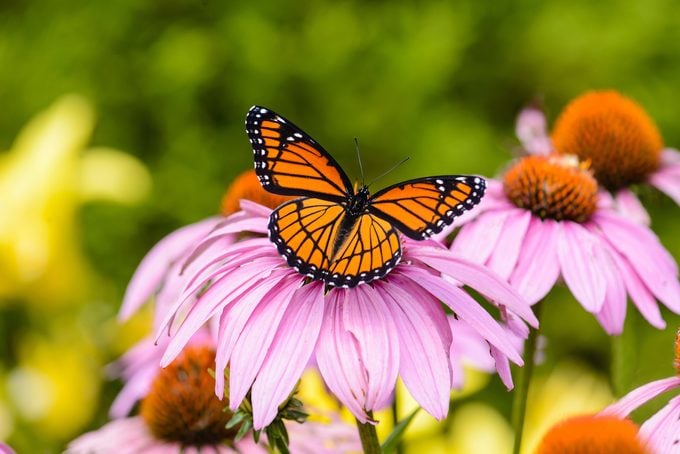
Viceroy Butterfly vs Monarch
It happens to every nature enthusiast at least once. You spot an orange butterfly with black markings hovering around a pretty flower and say, “Oh, look, it’s a monarch!” Except, on closer inspection, you realize it’s not. That bold beauty is actually one of the monarch mimics—a viceroy. Once you know what to look for, it’s easy to tell the difference between a viceroy butterfly vs a monarch.
Generally, viceroys are a bit smaller than monarchs. But the simplest way to differentiate between them is to check for the extra black line that extends all the way across the lower wing. You can see this giveaway whether the wings are open or closed.
The monarch and viceroy butterflies have similar color patterns, but the monarch sails along with its wings held up in a shallow V, while the viceroy makes several quick flaps and then goes into a flat-winged glide.
Discover fascinating monarch butterfly facts.
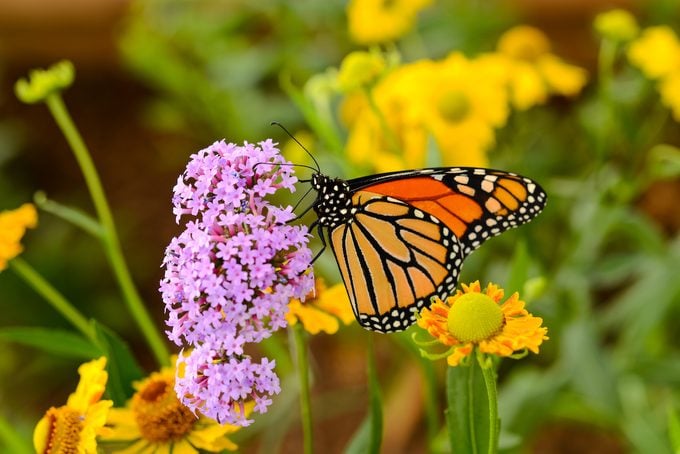
Mimicry is a common form of defense among butterflies. Both monarchs and viceroys eat plants that contain bitter-tasting chemicals. For the monarchs, it’s milkweed, which contains toxic latex sap. Monarchs have learned to tolerate it and store those toxins in their bodies to make them taste bad to predators, both as caterpillars and adults.
Likewise, viceroy caterpillars chow down on host plants in the willow family. Those plants contain salicylic acids, and viceroys store them in their bodies, just as monarchs store latex sap.
By evolving to resemble each other, monarchs and viceroys signal to predators that they’re both unpalatable. Viceroys mimic other monarch lookalikes, too. Queen and soldier butterflies have darker, burnt orange-brown coloring compared to monarchs. They’re only found in southern areas. Viceroys that also live in the south are noticeably darker, as they mimic the queen instead of the monarch.
Follow the stages of the monarch butterfly life cycle.
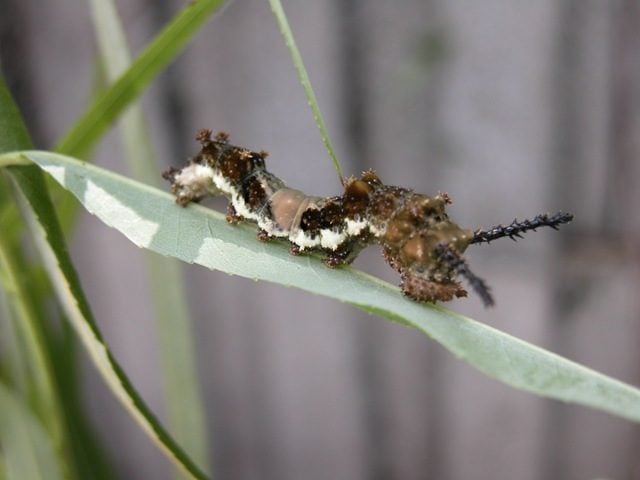
Viceroy Caterpillar vs Monarch Caterpillar
Viceroy caterpillars look nothing like their yellow, white and black striped monarch counterparts. Instead, in their later stages and in chrysalis, they mimic a pile of bird droppings—clearly not a tasty meal! Unlike monarchs, viceroys don’t migrate, and adult butterflies die off before winter sets in. Psst—use this monarch migration map to track the epic journey.
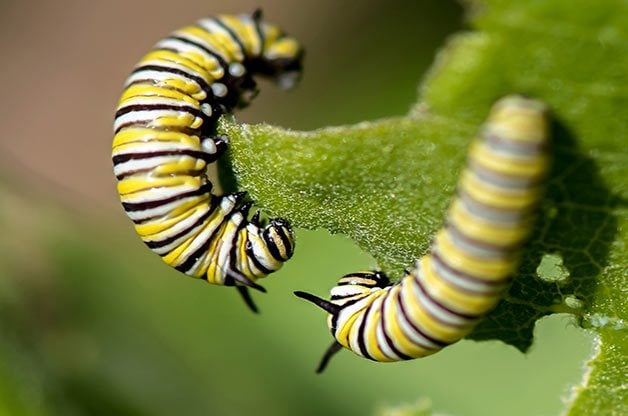
When the days grow short, late-season viceroy caterpillars use silk to secure leaf stems firmly to branches. They roll up the leaves and shelter inside through winter. As soon as fresh leaves grow in spring, the caterpillars emerge and resume eating. In just a few weeks, new adult butterflies appear.
Viceroy Butterfly Habitat and Host Plants
Attract viceroys by planting their host plants—willow, cottonwood and poplar—in your backyard garden. Viceroy butterflies lay their eggs on willow leaves and members of that family. Because of this, they’re more often found in wet areas like edges of lakes and rivers and moist woodlands throughout most of the United States and parts of Canada and Mexico. Adults sip nectar from flowers but also love rotting fruit and tree sap, especially in spring.
Are monarch butterflies endangered?
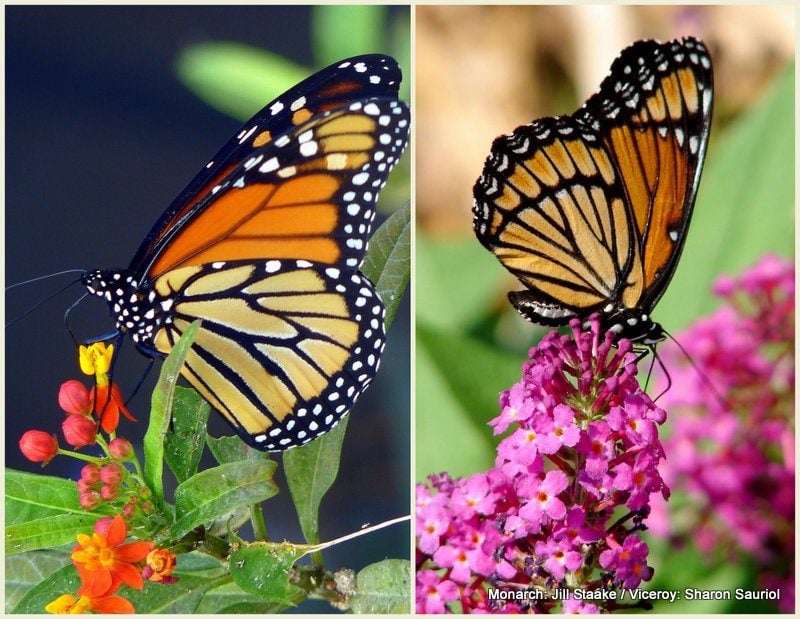
Viceroy vs Monarch Butterfly Decoder
Figure out whether a viceroy or monarch butterfly is visiting your garden.
Viceroy Characteristics
- Wing pattern: Black line across lower wings
- Wingspan: 2 ½ to 3 ½ inches
- Host plant: Willow, poplar, cottonwood
Monarch Characteristics
- Wing pattern: No black line on either wing on both sides side of lower wing
- Wingspan: 3 ½ to 5 inches
- Host plant: Milkweed
Next, check out the best monarch butterfly flowers you should grow.
